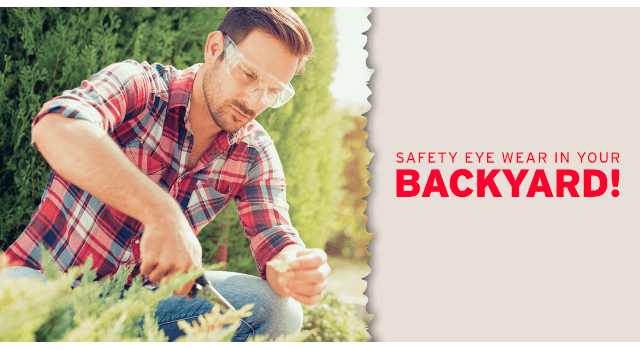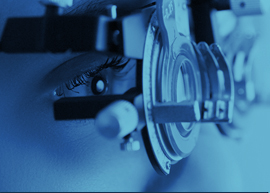Your eyes are among the most important organs in the body when it comes to discovering and interacting with the world around you. Unfortunately, they are also among the most exposed, and vulnerable to damage. That’s why it’s so important to ensure that proper protective gear is worn in places and situations where you might accidentally sustain an eye injury.
Whether it’s participating in sports, working with chemicals while cleaning or in a lab, or working on do-it-yourself projects around the home, it’s important to know what counts as proper protection, and what doesn’t.
Fortunately, our eye doctors at are here to explain.
Do Normal Prescription Glasses Count As Safety Equipment?
In short, no. Prescription glasses are built with materials that are primarily useful in promoting wearer comfort and helping you see better and more clearly.
The kinds of plastics and metals used in the frames are built for comfort, but may not hold up against flying shards of metal and wood.
Likewise, lens materials in prescription eyeglasses are chosen for their ability to be easily shaped and molded to give you optimum vision while minimizing aberrations. This ability to be easily molded does not lend itself well to also being impact-resistant.
Safety equipment gear for the eyes is also built with an extra guard around the sides to protect from flying debris and chemicals from all-around. This extra guard is not present in the vast majority of prescription eyeglasses.
So what IS considered proper safety equipment for protecting your eyes?
Personal Protective Equipment For Protecting Your Eyes
In general, there are three types of accepted safety equipment depending on your particular needs and preferences:
Safety Glasses
are made with shatter-resistant lenses, which are manufactured from materials like propionate plastic or polycarbonate. They also have side shields that help from debris and dust that may enter from the sides of, rather than in front of, the face.
What are safety glasses good for? These glasses are designed to be shatter-resistant and protect the eye from large, physical objects such as wood chips or metal or glass shards that could impact the eye, causing serious injury. Some types of safety glasses also offer laser light filtration, preventing reflections from the laser entering the eye, causing painful retinal burns.
What are safety glasses NOT good for? Safety glasses are not meant for protection from liquids or vapors.
Safety glasses can be purchased with or without prescription lenses and can also be ordered with bifocals.
Safety Goggles
These are another common type of personal protective equipment. They may be vented or non-vented.
Non-vented goggles are used as protection from mists, vapors, fumes, or other airborne hazards that require the eyes to be completely covered.
Vented goggles are meant to protect the eyes from liquid chemicals that pose no danger from vapor or mist. These also have a series of buttons embedded into the plastic that house something called a “baffle plate,” which allows air to pass through, but acts as a blockage so that liquid can’t get in.
Be aware that there are many types of goggles on the market, and some are not meant for certain kinds of work. Common, hardware-store goggles, for example, often have holes drilled into the plastic, which can let vapors and liquids into the mask, making them unfit for laboratory work.
Face Shields
These are actually not meant to be worn as the sole line of protection for your eyes. Rather, they are supplemental protection for the entire face, and goggles worn underneath the face shield block any vapor or liquid which may make it past.
Still not sure what kind of eye protection you need? Come visit our eye care practice to find out more!
At Cove Eyecare, we put your family's needs first. Talk to us about how we can help you maintain healthy vision. Call us today: 254-549-1142 or book an appointment online to see one of our Copperas Cove eye doctors.
Want to Learn More? Read on!
FOLLOW US:
Q&A
Do Normal Prescription Glasses Count As Safety Equipment?
In short, no. Prescription glasses are built with materials that are primarily useful in promoting wearer comfort and helping you see better and more clearly. Safety glasses can be purchased with or without prescription lenses and can also be ordered with bifocals. Safety goggles may be vented or non-vented.
What are Non-vented goggles ?
Non-vented goggles are used as protection from mists, vapors, fumes, or other airborne hazards that require the eyes to be completely covered.






